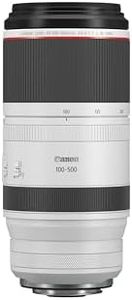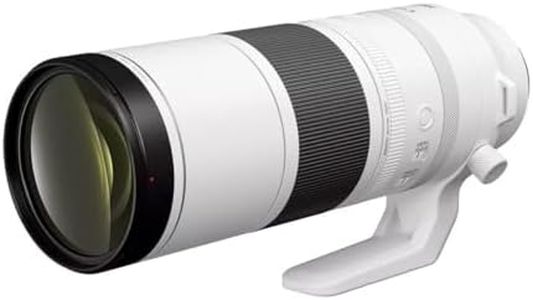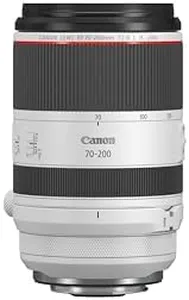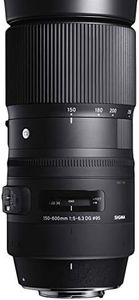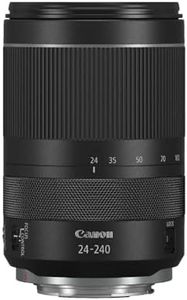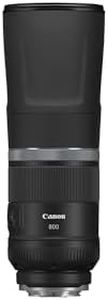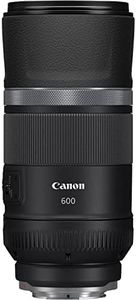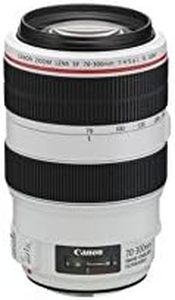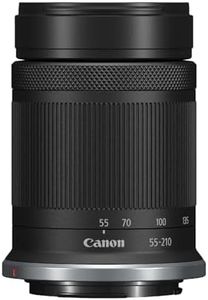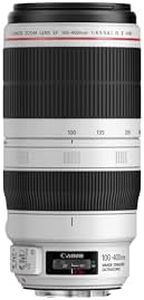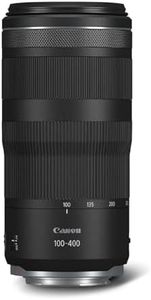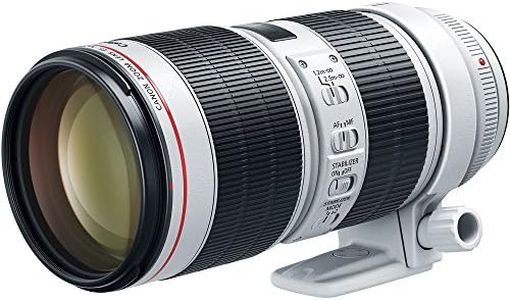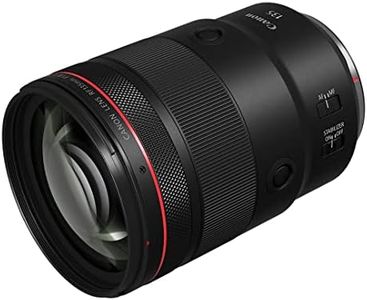We Use CookiesWe use cookies to enhance the security, performance,
functionality and for analytical and promotional activities. By continuing to browse this site you
are agreeing to our privacy policy
10 Best Canon Telephoto Lens
From leading brands and best sellers available on the web.By clicking on a link to a third party's website, log data is shared with that third party.
Buying Guide for the Best Canon Telephoto Lens
When choosing a Canon telephoto lens, it's important to understand your photography goals—are you capturing wildlife, sports, portraits, or distant landscapes? Telephoto lenses are designed to bring far-away subjects closer, but they come with various features and specifications that affect how they perform. Knowing what each specification means can help you select a lens that matches your needs and the kind of pictures you want to take.Focal LengthFocal length is measured in millimeters (mm) and describes how much of a scene the lens can capture and how close it brings distant subjects. In telephoto lenses, focal lengths typically start at 70mm and can go up to 600mm or more. Short telephoto (70-135mm) is good for portraits and events, medium telephoto (135-300mm) suits sports and wildlife in moderate distances, and super-telephoto (over 300mm) is preferred for extreme sports, distant wildlife, and astronomy. To pick the right focal length, consider how far your typical subject is and whether you will need more reach to get closer shots.
ApertureAperture is represented by the f-number (like f/2.8, f/4, f/5.6) and it controls how much light enters the lens. A lower f-number means a larger opening, allowing in more light and making it easier to shoot in dimmer conditions or to blur the background for subject separation. Fixed (constant) apertures (e.g., f/2.8 throughout the zoom range) are more versatile and bright, while variable apertures (e.g., f/4-5.6) change as you zoom and tend to be more compact. Choose a lens with a lower f-number if you plan to shoot in low light or want more background blur, while higher f-number lenses can work well for daylight or if size and weight are important to you.
Image StabilizationImage stabilization reduces blur caused by hand movements, letting you take sharp photos at slower shutter speeds. Some telephoto lenses have built-in image stabilization, which is especially helpful when zoomed in, as small shakes are more noticeable at longer focal lengths. If you often shoot handheld, in low light, or at high zoom, having stabilization can make a noticeable difference in your photo sharpness. If you always use a tripod or only shoot in bright conditions, image stabilization might be less critical.
Autofocus Motor TypeTelephoto lenses can use different types of autofocus motors, affecting how fast and quietly they focus. Common options include ultrasonic motors (USM) for quiet and fast focusing, and stepping motors (STM) which are smoother for video. If you shoot action, sports, or wildlife where fast, accurate focus is key, look for lenses with faster motors. For general photography or video, quieter and smoother motors are beneficial.
Lens Weight and SizeTelephoto lenses can be quite heavy and large, making them challenging to carry for long periods or when traveling. Size and weight tend to increase with longer focal lengths and wider apertures. If portability is important, you may prefer a smaller, lighter telephoto even if it means sacrificing some zoom or a wider aperture. If you mostly shoot from a fixed location or use a tripod, a heavier lens may not be a problem.
Compatibility (Mount Type)Canon uses different mounts (such as EF, EF-S, RF) for their camera bodies, and it’s crucial to pick a lens that matches your camera. Ensure the lens is compatible with your specific Canon camera—otherwise, it may not attach or function properly. Double-check your camera’s mount type before making a choice so that the lens fits seamlessly.
